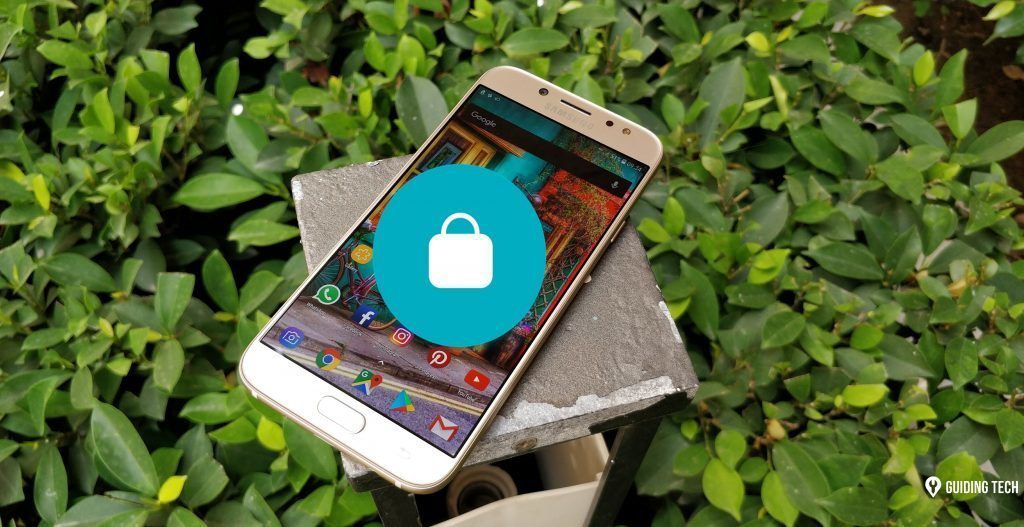For instance, did you know that you could encrypt your Chrome browsing data with something called a ‘sync passphrase?’ Or the fact that Chrome comes with a built-in malware scanning and removal tool? If not, let’s dig in and check out a handful of the best Chrome security settings and tips that you can modify or implement right away.
1. Use a Sync Passphrase
Sign into Chrome with a Google Account, and you can sync your browsing data (such as your bookmarks, passwords, and autofill info) seamlessly across devices. If your account details get compromised, anyone can access that data. Luckily, you can use a sync passphrase to prevent that from happening. Basically, a sync passphrase is a secondary password of sorts. It starts by encrypting the various forms of data stored on the Google servers and decrypts them after they’ve synced locally to a device. Since only you would know your sync passphrase, no one should be able to access your data even after an account breach. Obviously, that only works if you play your part in keeping the passphrase secure. To set up a sync passphrase, bring up the Settings screen in Chrome and go to Sync and Google Services > Encryption Options. Then, select ‘Encrypt synced data with your own sync passphrase’ to create a sync passphrase. You must then add the sync passphrase to the rest of your devices to continue syncing your data.
2. Update Google Chrome
Security-related vulnerabilities show up all the time in Chrome. Thankfully, Google has a fast update cycle that patches them up quickly. Hence, you need to ensure that Chrome is up-to-date. Chrome is adept at updating itself automatically, but it’s best not to leave that to chance. Open the Chrome menu, point to Help, and select About Google Chrome to force-install the latest updates.
3. Clean Up Computer
Chrome comes with a built-in harmful software removal tool. It’s best used to get rid of rogue extensions and background apps. You should give the utility a spin once every week or month just as a preventative routine. Go to Chrome Settings, expand the Advanced section, click System, and then select Clean Up Computer. On the screen that follows, click Find, and the utility will automatically detect and remove any forms of harmful software that it detects.
4. Switch to Enhanced Protection
Chrome uses a Safe Browsing service that actively warns you about malicious websites, downloads, and browser extensions. It comes in two protection settings—Standard and Enhanced. By default, Chrome uses the Standard protection setting. But. you can switch to the Enhanced protection setting for a proactive security experience. Head into Chrome Settings > Privacy & Security > Security and select the radio button next to Enhanced Protection. The setting does end up transmitting your browsing data to Google regularly, so you may want to skip this if you find that concerning.
5. Use a Content Blocker
Malicious websites and misleading advertisements can trick you into infecting your computer. While they tend to appear as friendly pop-ups, they may also phish your system for personal information. Chrome’s Safe Browsing module helps by blocking pop-up windows that are potentially dangerous. But sometimes, that alone just isn’t enough, which is why you must install a content blocker such as uBlock Origin, Adblock Plus, or AdGuard AdBlocker. These browser extensions use filter lists of known trackers and malicious URLs to prevent all sorts of unwanted content from loading. Better yet, they also help speed things up by blocking resource-intensive scripts and advertisements. uBlock Origin Adblock Plus AdGuard AdBlocker Note: If you decide to use a content blocker, remember to whitelist websites that you support since ads do help keep the lights on.
6. Use Guest/Incognito Mode
If you use Chrome on a shared device, it’s best to avoid using normal Chrome windows, especially if you plan to use your Google Account to sign in and access Google services. Instead, try using a Guest or an Incognito window. These windows do not store your data and deletes all of it automatically whenever you exit them. Open Window in Guest Mode — Select the profile icon to the top-right corner of the Chrome window and select Guest. Open Window in Incognito Mode — Open the Chrome menu and select New Incognito Window.
7. Sign Out of Browser
In case you end up signing into a Google web app or service while using a normal Chrome window, remember to sign out. If not, anyone can access your Google Account and view personal information, including saved credit card information and passwords. To do that, open any Google services, select your profile portrait, and then select Sign Out. Additionally, you must check if you’ve signed in at browser level and delete any browsing data that you may’ve synced locally. Start by heading into the Settings pane. If you see your Google Account details listed underneath the You and Google section, click the Turn Off button next to it. Then, check the box next to ‘Clear bookmarks, history, passwords, and more from this device’ and select Turn Off again.
8. Run Safety Check
Did you know that Chrome comes with a built-in tool that allows you to run a basic safety check? Head over to Chrome Settings, scroll down to the Safety Check section and click the Safety Check button. The Safety Check tool will then verify that Chrome is up-to-date, cross-check for instances of password breaches, and confirm that Safe Browsing is set up properly. It will even let you know that there aren’t any malicious extensions installed. Run it once in a while.
9. Use a VPN
A VPN, or virtual private network, encrypts web traffic, and helps secure your browsing activity, especially if you use public Wi-Fi connections regularly. However, you will have to pay for a solid VPN service since the free options might do more harm than good.
Stay Vigilant, Stay Safe
Now that you know about the best Chrome security settings, it’d help if you set up them as part of a regular routine. You must also stay vigilant while browsing the internet—avoid downloading files from unfamiliar websites, make purchases from secure sites only, and use strong passwords everywhere. Next up: Getting peppered with notifications from Google Chrome? Here’s why that happens. The above article may contain affiliate links which help support Guiding Tech. However, it does not affect our editorial integrity. The content remains unbiased and authentic.













